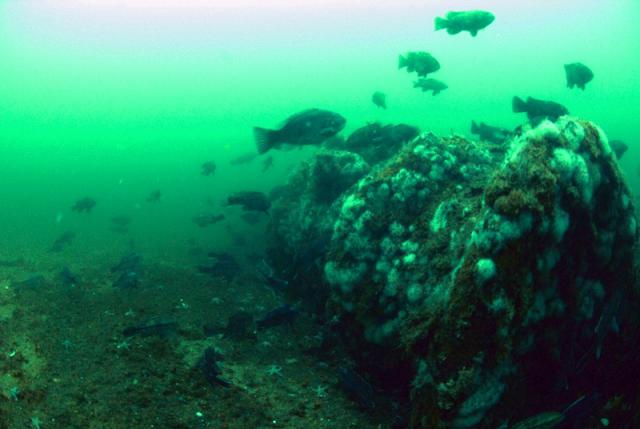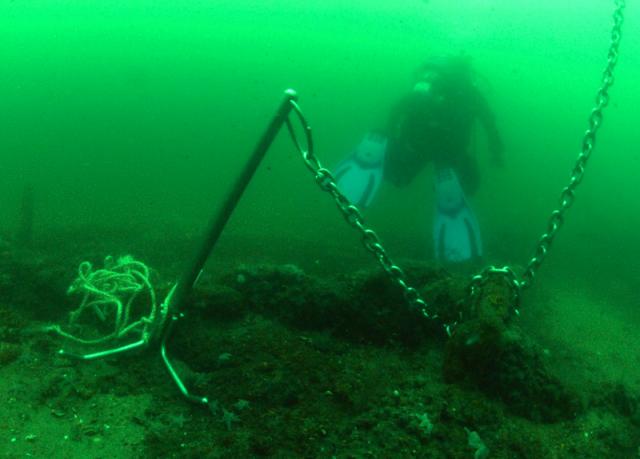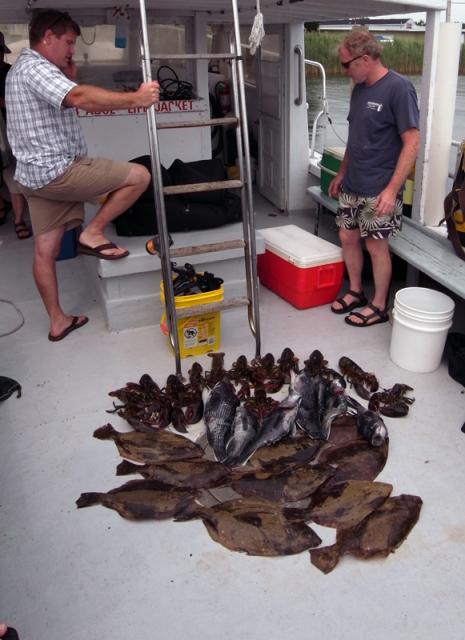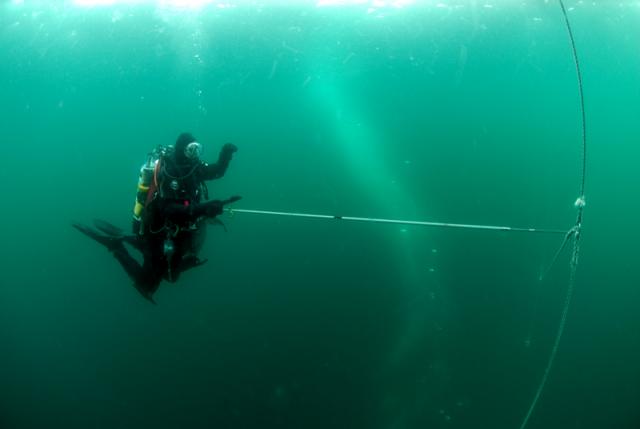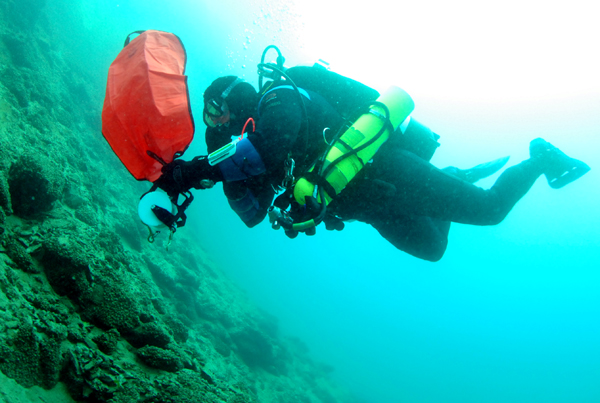I was going to write a description of this day, but Rob Infante did a better job than I could:
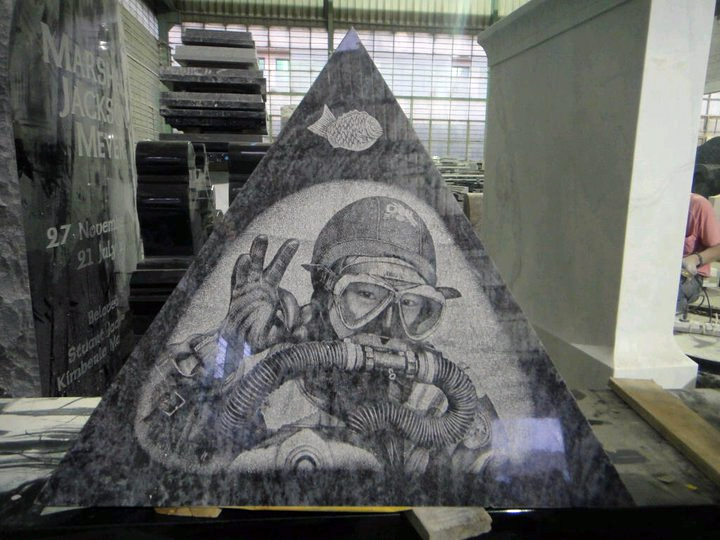
Memorial
Sunday July 31st is a day of very special import, the day we lost our beloved Yasuko. Yesterday we returned to the site of the Arundo to pay our respects and honor her amazing spirit with a suitable memorial. After almost a year of planning inflables we steamed out on the Gypsy Blood, filled with friends and family. We were blessed with optimal conditions, sunny skies and mild seas with just enough of a zephyr to keep things comfortable (I reminded everyone that it would nevertheless be honoring Yasuko’s memory if somebody had to lean over the rail. And somebody did.)

Memorial
The memorial itself is a work of art, a blue granite pyramid carved with her name, messages to her, and a lovely representation of her in her dive kit (one of my favorite pictures of her, as even through her mask you can see her eyes smiling), and even a visual pun. The logistics involved in the process were complex, starting with the design and creation of the memorial. Carl Bayer and Sunny Longordo spearheaded the process, and did an absolutely brilliant job of it. Saturday night it was revealed at a party we had in Yasuko’s honor, and took pride of place. It was important to us to place the memorial on the spot where she last was, made more difficult by the semi-broken nature of the wreck. Lowering a 173# stone to the bottom, then transporting it to the spot was also a daunting task. The crew of the Gypsy Blood did a fantastic job of putting us in the right area. Divers were each assigned to teams. Everyone had a job to do, everyone’s job was essential, and everyone performed their task flawlessly. As soon as we were tied in Stephan Francke and Shelly Liu splashed to go find the exact location for the site, and in no time at all a bottle came up to indicate they had done so. While they did that, Joe Zimmerman, Mike Bender and Sunny Longordo helped guide the piece to the bottom, with Captain Jim belaying it down. This was one of the more nerve-wracking parts, as a hard bounce could easily have shattered the piece, but with the teamwork of all it was gently lowered. Dan Wright, master underwater photographer, accompanied the whole process, so we could share the underwater experience and have documentation of this unforgettable day. Dave Oldham ran a reel, so that there was now a continuous guideline taking us from the memorial to the
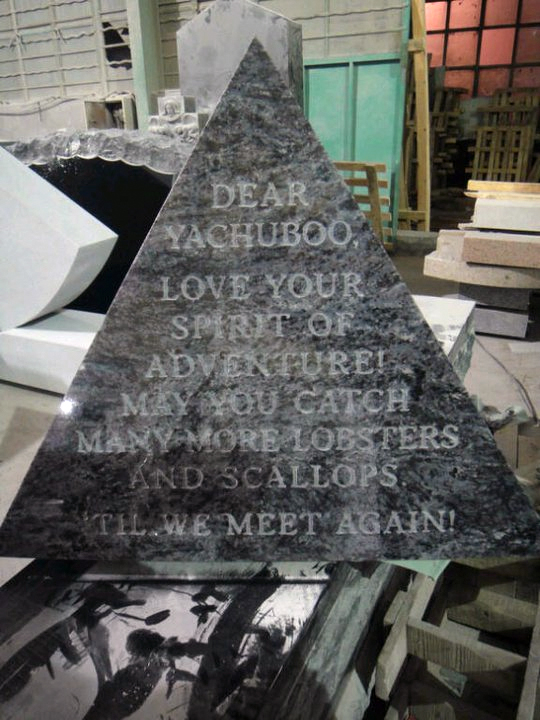
Memorial
final site. The last team consisted of Sherwood Probeck, Elliot Bertoni and me, tasked with moving the stone 125 or so feet. Before splashing I was warned that it had settled into a hole and was going to be difficult to move. With some trepidation I lifted it from the hole, but our concerns proved baseless. The descent team had done an ideal job of putting gas in the lift bag on the descent. Despite the weight it was very easy to control and move, so much so that even with 15 feet of up-and-down crossing the wreck we never needed to add or subtract gas from the bag. In less than 15 minutes we had the memorial maneuvered into place.
It was only at that moment that I was able to believe that this thing we had thought about and planned for so long had actually come to fruition, that we had managed to honor and remember Yasuko in the exact manner that we had hoped to. I felt a huge pressure release in my chest. Seeing the memorial in that place gave voice to my grief, and, floating with my hand on the spire of the pyramid, I was overcome with emotion.
For once I didn’t mind doing deco, as it gave me a quiet time with my thoughts. Like an oyster with a grain of sand, we try to coat our pain, to soften it so it doesn’t cut so badly. I don’t want that, for the pain of her loss to diminish. I want it to be sharp, I want it to cut, because it makes her feel less gone. That’s unrealistic, and flies in the face of human nature, but for just this day I felt it as keenly as ever, and will be forever grateful for that.
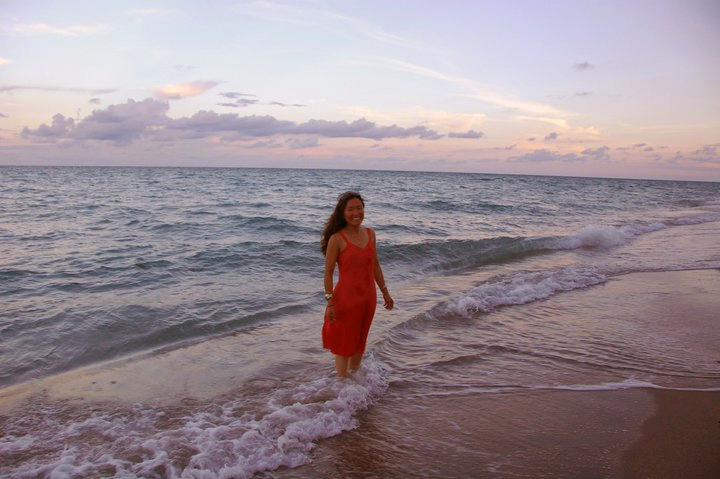
Yasuko in the surf
During the dives the children onboard splashed about and swam in the warm surface water. I was proud of how they understood and respected the gravity of the situation, and yet still their irrepressible enthusiasm helped lighten the mood, reaffirming the good in life. Inside, the cabin table was filled with tasty foods, including Yasuko’s beloved scallops. Laughter and good food were definitely part of how we remembered and appreciated her.
The final piece to the day involved casting flowers onto the waters over the wreck. Wrapped in our own thoughts, with scarcely a whisper, we took turns placing them. In the slanting light of dusk a sinuous carpet of petals slipped away on the current.
